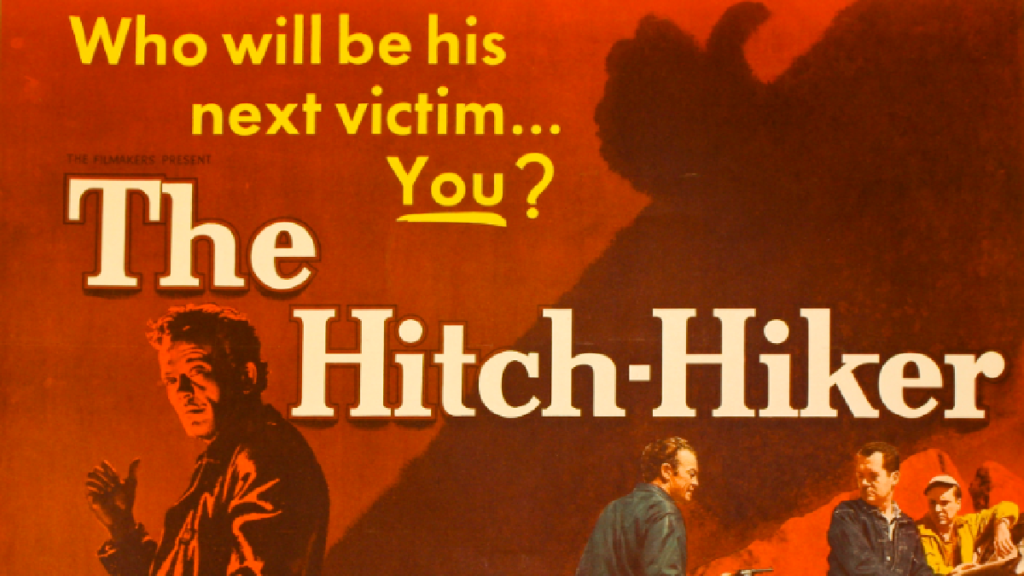If you want to be scared out of your wits on a solitary night indoors, Ida Lupino’s 1953 classic black-and-white film noir The Hitch-Hiker is sure to cause nightmares. With Ms. Lupino’s sixth film as director (two of the prior five were uncredited to her, the 1949 and 1951 films Not Wanted and On Dangerous Ground, respectively), Ida became the first woman to direct a mainstream film noir. A 71-minute tale of terror that should give any motorist pause before picking up a walking stranger.
Based on the latter part of a crime spree committed by William “Cockeyed” Cook, a serial killer who was executed only four months before the movie’s Boston premiere, actor William Talman’s fictionalized character Emmett Myers is pathological terror personified. Through Talman’s dedicated performance, down to the droopy eyelid, he became both a cinematic successor of child murderer Hans Beckert (Peter Lorre) in M (1931); and a psychopathic predecessor to Anton Chigurh (Javier Bardem) in No Country for Old Men (2007).
FemmeFilmFest21 Review: Beta Male (Marianne Chase)
The film enters the world of Myers’ murder spree near the end, when two men on a fishing trip (a hunting trip in real life) James Burke and Forrest Damron, portrayed by Edmond O’Brien as Roy Collins, and Frank Lovejoy as Gilbert Bowen decide to pick him up on the road. Myers proceeds to psychologically torment the two men with a devilish relish along the way to his chosen destination of Santa Rosalia, Mexico.
Myers is so hell-bent on being in control at all times, that he sleeps standing, gun in hand, with one eye open. His hatred of human decency and kinship between his hostages, coupled with his self-annihilation of heart and spirit is perfectly illustrated, both by the haunting photography of Nicolas Musuraca (The Spiral Staircase (1946); Out of the Past (1947)), and the seemingly endless Mexican desert terrain travelled on by car and on foot. The merciless, roving captivity that Roy and Gilbert are forced to endure is a shorter, full-mortal version of Jesus’ trial of Satan’s temptations for forty days in the Judaean Desert.
Another interesting perspective of Lupino’s The Hitch-Hiker is her choice to keep the film true to life by depicting this madman’s pursuit by law enforcement in Mexico. Anti-Mexican sentiments, including ugly stereotypes among racist Anglo Americans certainly persists to this day. It is apparent that Lupino desired to flip the poisonous script on who are capable of gravely immoral acts by Myers, a man deluded and perhaps erroneously empowered by not being caught, slowly inching his way to his final comeuppance.
FemmeFilmFest21Review: Lovecard Fate (Marianne Chase, Cath Shayler)
Later in 1953, director Lupino’s film The Bigamist, centered on a deceitful man married to two women was released to theaters. The Hitch-Hiker was inducted by the US National Film Registry in 1998. Her third directorial effort Outrage (1950), about a young woman recovering from rape was also inducted last year in 2020.
Ms. Lupino has 106 known acting and 42 directing credits for film and television. When one looks back on Ida Lupino’s enormous successes in an industry that didn’t give her all her roses, we must remember that accolades are far less vital than the living memories that the minds of people spanning continents and generations keep and share with others. Her works live on. Brava Ms. Lupino!

